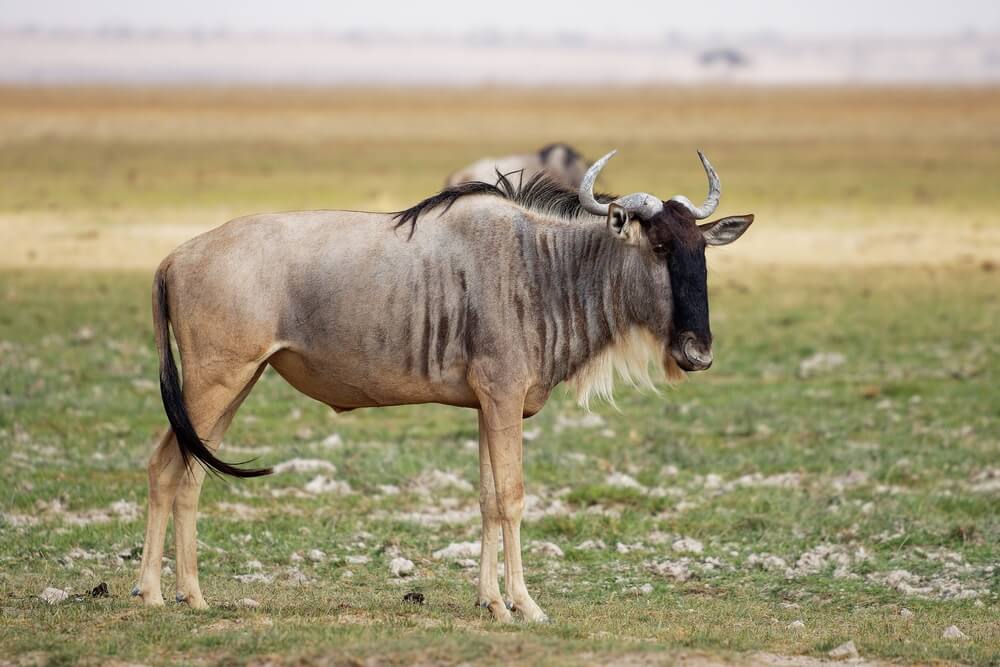Maasailand’s reach covers over 62,000 square miles across Tanzania and Kenya, giving American hunters a choice destination for a Tanzania hunting safari. Tanzania has long been regarded as one of Africa’s premium hunting destinations, with the Maasailand region proving its status time and time again.
Tanzania and its Maasailand territory are still largely wild and untamed; in fact, less than 15 percent of the country is accessible via tarred road. This lack of human influence means hunters can get their hands on an experience harking back to the golden age of game hunting and record trophies.
[DYNAMIC-BLOGTABLEOFCONTENT]
Key Takeaways
· Maasailand can be considered Tanzania’s top game hunting area
· Within the Maasailand region, there are multiple high-quality concessions
· Hunters can find Big 5 members, African plains game, and more
· Tanzania’s permit offering can be confusing, but it works
· The Maasailand doubles as an ideal family destination; non-hunters should tag along
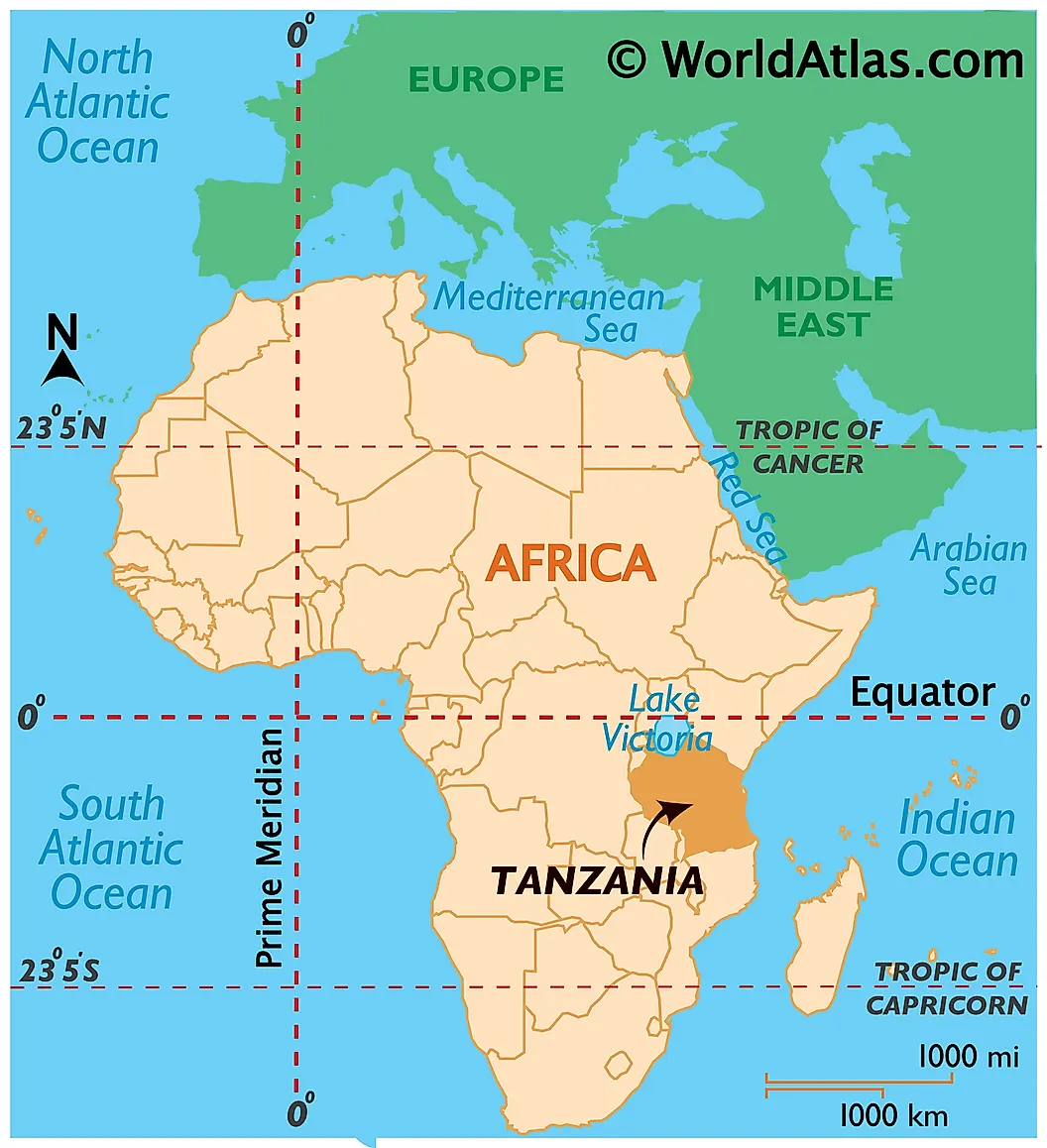
Maasailand Areas to Hunt on your Tanzania Hunting Safari
Enduimet
Found in the northern part of Maasailand’s territory, Enduimet is a quiet Wildlife Management Area less than 3 hours from Arusha by vehicle. The area’s main game hunting drawcard is elephants, frequently crossing the lands via the Kitenden Corridor on their migration to Kenya. Enduimet offers unique tourist experiences such as walking safaris and motorbike tours by local Masai folk called “Piki-Piki” tours, as well as the chance to stand at the Tanzania-Kenya border, which lies at the edge of Enduimet.
Kilombero
The Kilombero Valley area, edged by the Kilombero River and the Udzungwa Mountains, offers American hunters some of the most well-rounded big game hunting in Tanzania. The region is largely rural and made up of villages relying on subsistence farming practices, meaning you can travel for hours and not see another living soul. The region’s unique scope of landscape houses a wide variety of both big game and plains species, sure to contain the trophy you’re looking for.
Lake Natron
This GMA region starts at the edge of Africa’s Great Rift Valley and includes both the Kitumbeini Mountain and volcanic Oldonyo Lengai, known to the Masai people as “The Mountain of God.” An African hunting trip in this area will see you crossing large open savannah plains, acacia bush, woodlands, and even mountainous points reaching up to 9,500 feet, if so desired. Lake Natron is considered one of Maasailand’s most picturesque areas and is an ideal environment to include the family for an African adventure.
Monduli
Covering just 2,700 square miles, Monduli is one of Tanzania’s smaller regions and is made up almost entirely of dirt and gravel roads. Like other Maasailand game hunting areas, Monduli has a varied landscape running from semi-desert to large rainforests home to some of the biggest hunting species and biggest trophies. Monduli’s hunting concessions are mostly made up of community-run Wildlife Management Areas, bringing in local knowledge and involvement to the area’s conservation and hunting industries.
Burko
Another Tanzania hunting safari region that doesn’t require hours of travel from the Airport, Burko is considered the heartbeat of the Maasailand as it falls in the center of this vital landscape. Part of the East African Rift system, Burko covers around 450,000 acres of rainforest, mountain, and semi-arid plains. Offering endemic species found nowhere else when game hunting in Tanzania, Burko also offers American hunters freedom from the pesky Tsetse fly and memorable tourism opportunities to enjoy.
Maswa Makao
Framed by the Mara Serengeti and Ngorongoro Crater, Maswa Makao is one of Tanzania’s most important ecosystems. The region is also a vital wildlife corridor, forming part of Africa’s famous “Great Migration,” as well as many community-led conservation initiatives. Maswa Makao is also considered a challenging hunting region made up of woodlands, rocky outcrops, and water springs that form much-needed watering holes for the area’s big game and African plains species.
Liwale
Considered one of Maasailand’s most rugged and rough locations, Liwale covers ground in the southern sector and borders both the Selous and Nyerere national parks. The region is marked by a diverse landscape ranging from miombo woodland and forest to rolling hills and vast plains that drive home Liwale’s feeling of isolation. The varied biodiversity and lack of population lend themselves to some of the best hunting in Tanzania, if you’ve got the skills and willpower to take it on.
Ruvu
A few hours from Monduli lies Ruvu, another of Maasailand’s smaller hunting regions. Ruvu’s 1,000 square mile area is marked by a landscape of thick brush and soaring baobab trees, creating an almost magical little area for American hunters to track some of Maasailand’s most popular species.
What American Hunters Can Enjoy: Popular Species and Where to Find Them
An African hunting trip has its well-known suspects when it comes to species, and Maasailand offers hunters the opportunity to hunt almost all of them within its borders. There’s a Tanzania hunting safari for pretty much everyone, whether you’re looking for the next trophy in your collection, a shot at a new record, or even just wanting a true African game hunting experience; Maasailand has what you’re looking for.
Big Game Hunting in Tanzania
Elephant – Enduimet, Monduli, Maswa Makao
The largest land animal on the face of the Earth, the Elephant, has been synonymous with hunting in Tanzania for hundreds of years. Game hunting planners need to be aware that currently, no Elephant trophies may be shipped or transported to the US. However, non-exportable hunts provide the opportunity to still experience the stalk and the rush of capturing Earth’s land giant.
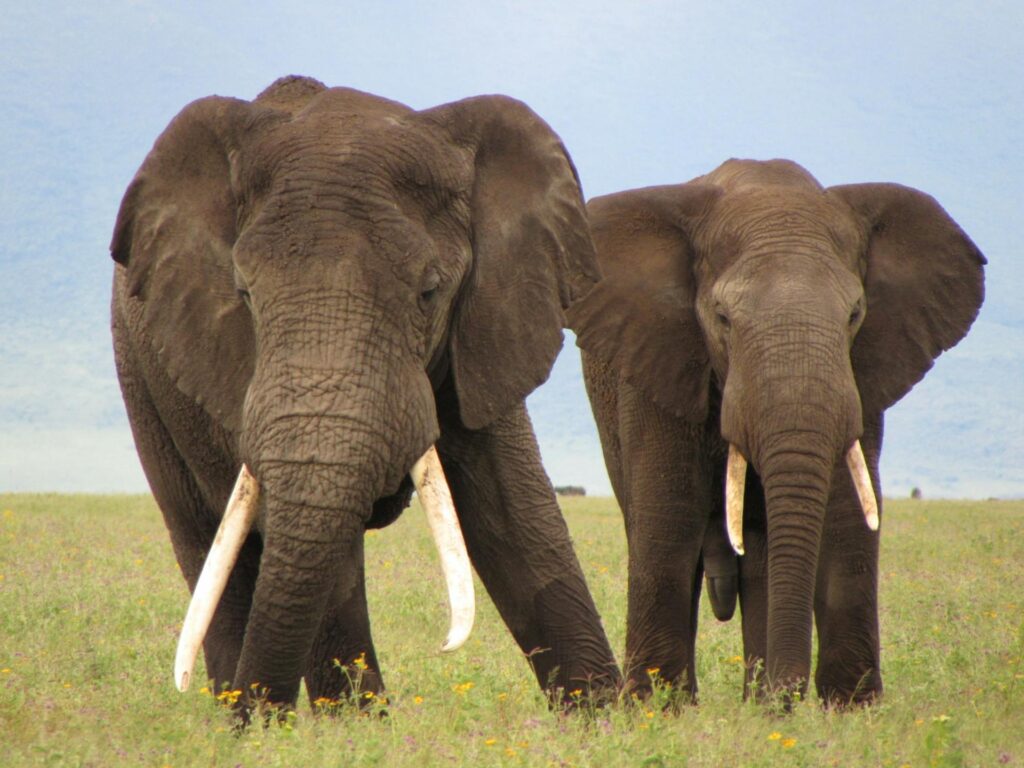
Lion – Maswa Makao, Kilombero, Monduli, Liwale
The largest of all African cats, the Lion can pull up to 400 pounds. And, regardless of how you choose to mount it, it makes for a spectacular trophy. The African Lion is often a target of American hunters due to the challenge and prestige associated with the hunt.
Leopard – Burko, Kilombero, Liwale, Monduli, Maswa Makao, Lake Natron
The golden cat of Africa, Leopards, are known for their distinctive dark rosettes set against a thick golden coat. Leopard hunting in Tanzania is challenging and requires stamina and skill, with a healthy dose of patience. This cat is extremely intelligent, and as much as you’re watching them, they’re likely watching you too…
Buffalo – Kilombero, Lake Natron, Enduimet, Monduli, Maswa Makao, Liwale
The Cape Buffalo is a symbol not only of African hunting but also carries strong ties to African culture and folklore. One of the most dangerous (and deadly) of the Big Five, buffalo boys can grow to be over 1,000 lbs. and carry impressive bosses sure to make an attractive mount on the trophy stand.
African Plains Game Options
Eland – Ruvu, Burko, Maswa Makao
The northern reach of Tanzania features the Patterson’s Eland, while the south is home to the Livingstone Eland. A way to tell them apart is the stripes or lack thereof; Patterson’s eland lose their white side stripes as they mature, whereas Livingstone eland carry theirs through adulthood. Eland can be hunted on the shorter licenses, provided no big game is included in the package.
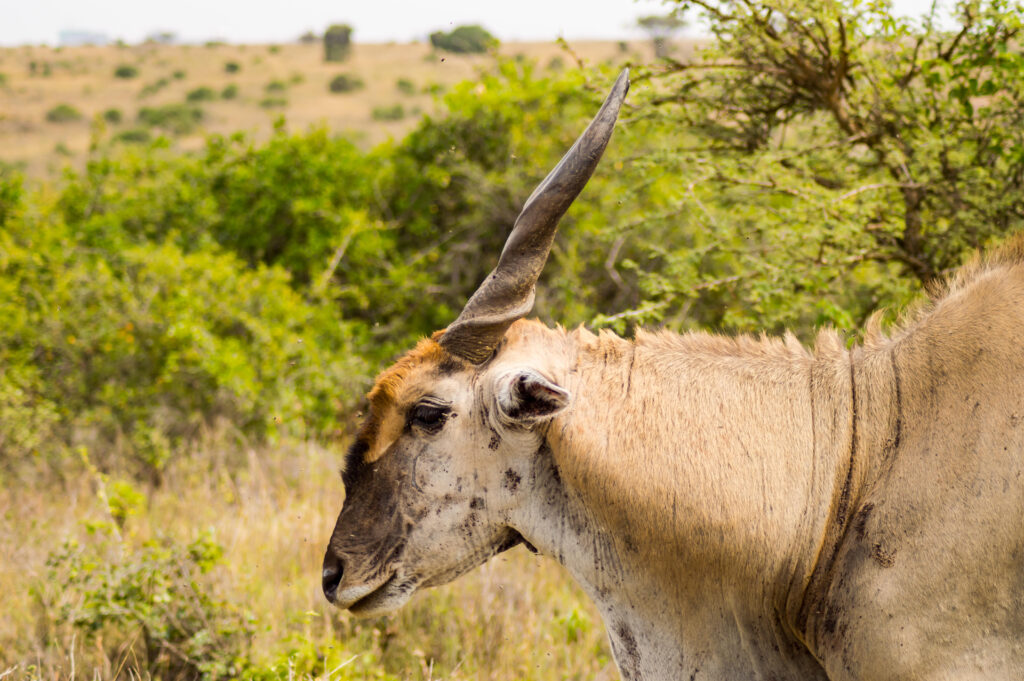
Wildebeest – Enduimet, Lake Natron
The White-Bearded Wildebeest is endemic to Tanzania, particularly the eastern and western parts of the Masailand region. The other Nyassa subspecies is more common and can be found throughout most of Masailand’s cover. Wildebeest hunts either start at dawn or dusk when these animals are most active; during the daylight hours, they hide away, seeking shelter from sweltering temperatures.
Zebra – Kilombero
One of the plains’ big grazers, Zebras, and their iconic stripes have long been a source of amusement and fascination. Zebra hunting in Tanzania doesn’t require a special license (CITES has them listed as least concerning) and can be hunted on their own or combined with other plains game on the shorter 10-day license.
Kudu – Burko, Monduli, Maswa Makao
Both Greater and Lesser Kudus can be found in Masailand, depending on whether you’re in the north or south. The Greater Kudu, as the name implies, are significantly larger than their relatives, averaging around 600 pounds for males. Both variations grow the signature spiral horns, but they’ll make you work for them. Kudus are capable of brilliant camouflage and are elusive with excellent hearing. So you will need to tread carefully to hunt this African plains game trophy!
Serval – Kilombero
One of Africa’s mid-size cats, the Serval is an agile, stealthy, and proficient hunter. These cats are typically stalked while going about their business, and baiting can be attempted, but they’re more likely to wander off and catch their dinner themselves. Its striped and spotted coat helps with camouflage, while its speed and agility also need to be considered when hunting the Serval.
Hyena – Kilombero
Both the Spotted and Striped Hyenas can be found in Masailand. While not the prettiest of species, Hyenas are exceptionally intelligent and rather cunning creatures. This, coupled with their endurance, can test a hunter’s patience when you’ve been tracking for days without a single successful shot on option.
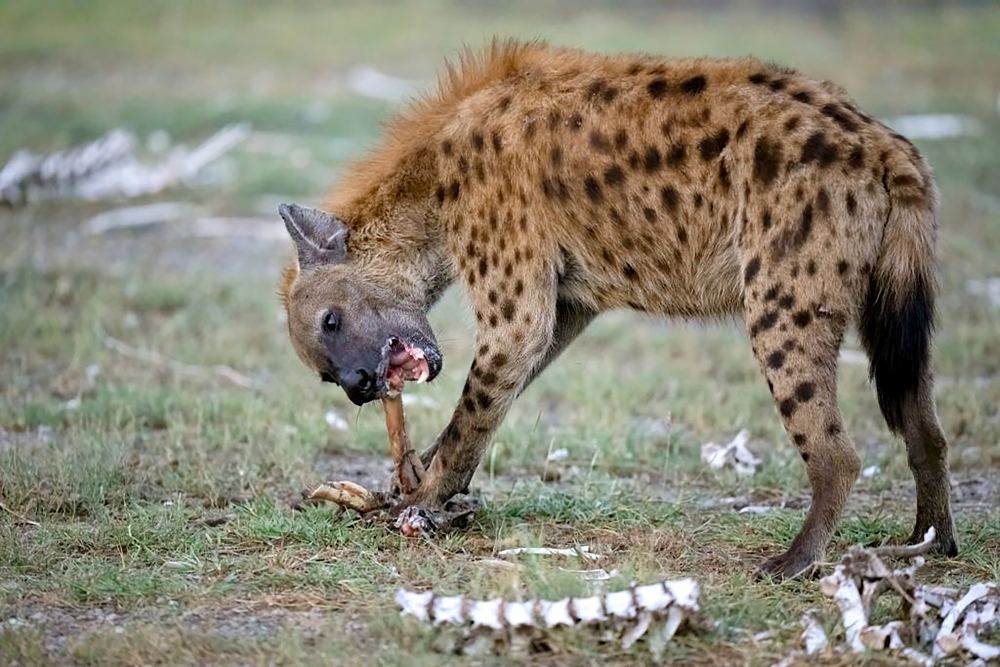
Hartebeest – Kilombero, Lake Natron, Ruvu, Monduli
The Maasailand is home to both the Coke’s and Lichtenstein’s varieties of Hartebeest. An African hunting trip to target these antelopes requires patience and caution, as they have both great hearing and eyesight, helping them to stay on alert while moving across the plains. Coke’s Hartebeest are larger with a more reddish color on their upper bodies, while the Lichtenstein’s are smaller with a red-brown body and yellowy white underbelly.
Exciting Exotics, Big and Small – Interesting and Alternative Options for American hunters
Fringe-eared Oryx – Burko, Lake Natron, Enduimet
Found in the northeastern parts of Maasailand, the Fringe-eared Oryx are specially adapted to the region’s woodland, semi-arid plains, and scrublands. Known as the “Maasailand Special,” this subspecies of Oryx can only be found on this African hunting trip as they’re endemic to the region. Like other Oryx, they sport the same long and slender straight horns but have a more fawn color coat compared to the grey shade of other Oryx species.
Gerenuk – Lake Natron, Enduimet, Burko, Monduli
These peculiar-looking antelopes have the nickname “Giraffe Gazelle” due to their almost disproportionately long neck and small head. The Masailand gerenuk, also known as the Southern gerenuk, is only found in Tanzania, while its northern cousin can be found in Ethiopia. These antelopes are independent of water, but are shy and skittish by nature, requiring careful stalking during dawn and dusk hours when they’ll be out browsing.
Dik Dik – Lake Natron, Enduimet, Monduli
Another Masailand special, the Kirk’s subspecies of Dik-Dik, can only be found in this landscape, where they prefer semi-arid habitats. The unusual, almost cartoonish-looking snout is an evolutionary adaptation assisting the antelope in regulating blood temperature and moisture loss. Dik-Dik hunting in Tanzania is recommended for dawn hours when the normally nocturnal animal is making its way home.
Genet – Kilombero, Enduimet
They may be called the Genet cat, but these shy nocturnal animals are closer relatives to the mongoose. Both the Common and Rust-colored Genet subspecies can be found in Tanzania’s Masailand region. If you’re wanting to specifically target the Genet, you might need to find an outfitter specializing in the species. Rarely spotted on a dedicated search, one is more likely to disturb a snoozing Genet during daylight hours.
Suni – Burko, Enduimet, Lake Natron
Another small antelope, that the SCI has named the East African Suni subspecies, is the nominal variety found in Tanzania. Tan brown with a white underbelly, only the males grow short, almost spiky horns, but both genders have the same “wiggly” tail, which is the common sign American hunters spot when tracking these small plains specials.
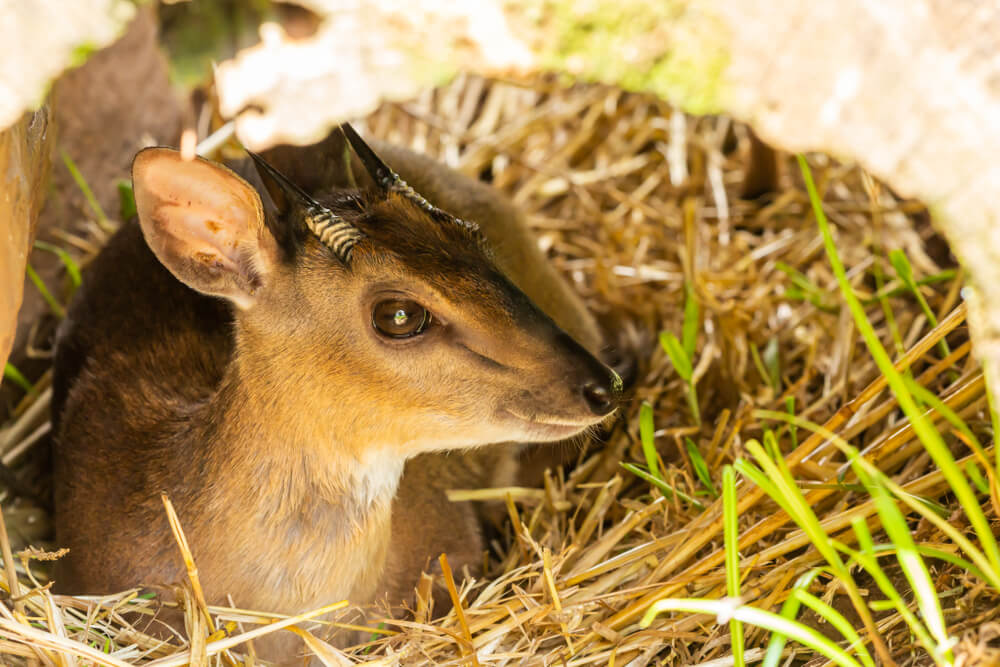
Ostrich – Lake Natron, Enduimet, Monduli
The Masai or East African ostrich is endemic to this region and is commonly seen as an “opportunity hunt,” an extra addition to the main game hunting agenda. Only males may be hunted, and these flightless birds can reach standing heights of 6 feet plus. A fun side quest to your Tanzania hunting safari, one must remember that the body of an ostrich is smaller than the feathers make it appear; be mindful of this when checking shot placement.
What makes Masailand a Top Destination for an African Hunting Trip
The Maasailand region comes out on top for hunting in Tanzania for a few simple reasons. Firstly is the diversity of its species; Maasailand offers almost everything from big game hunting for leopards and elephants, to a wide variety of plains species and some more interesting options, including wing shooting opportunities. Similarly, the region offers a varied landscape from acacia bush to rocky outcrops and wide-open plains, ensuring a unique and sometimes challenging environment. Given the nature of its environment, Maasailand can be seen as a prime location for the traditional and old faithful hunting method of the walk-and-stalk. Tracking your target over the plains and rocks will take you back to the area’s golden age of hunting in Tanzania.
A big plus for American hunters and any other tourist is the accessibility via Arusha, this main “travel hub” allows for regular and reliable access to the region, with flights and charters available to cut down on traveling time.
Another reason for its popularity is the cultural and tourist offerings of the area. The Maasailand region and its people are considered some of the most culturally rich and interesting of the African ethnic groups. Visits to local tribes where traditional practices are shown and shared are an experience unlikely to be forgotten.
Conclusion
Hunting in Tanzania might be challenging and a bit more costly, but the experience of just one of these African hunting trip offerings is worth its weight in gold (or Dollars…). A Tanzania hunting safari is a unique experience, and whether hunters take their prize trophy home or leave with just their memories and mementos, the experience (and the dust) will linger with you for years to come.
So book your shot at the Maasailand today, and land yourself an epic tale to tell at the next BBQ.
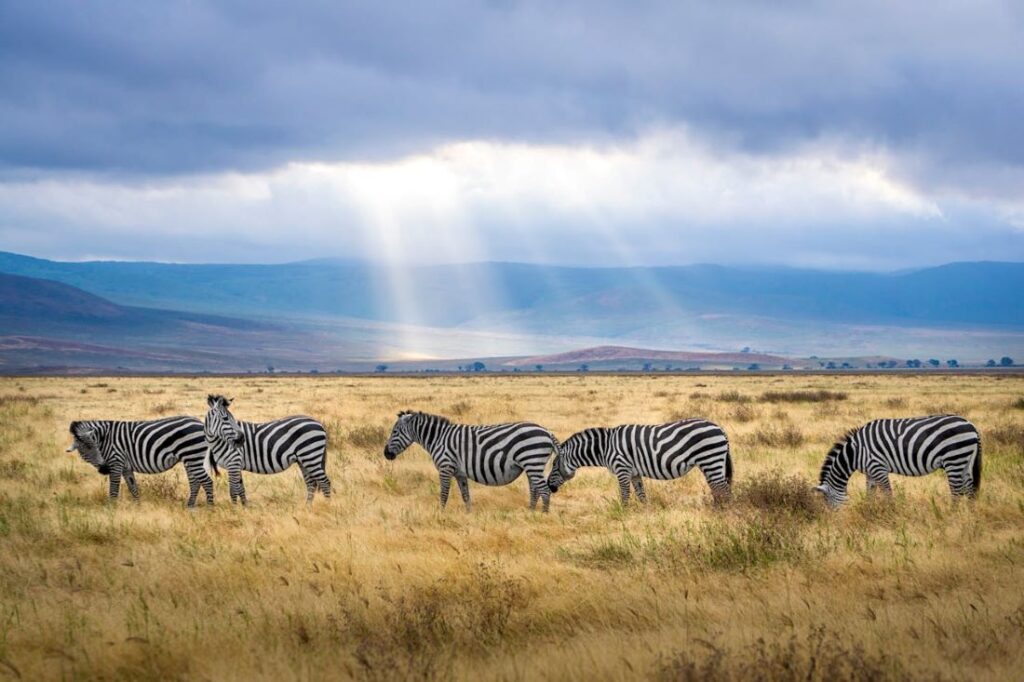
Frequently Asked Questions
What’s the Deal with Permits when Hunting in Tanzania?
Tanzania offers 3 hunting permit variations: 10, 16, and 21 days. Each permit relates to different hunting packages and depends on which animals you’ll be targeting. The short permits traditionally offer African plains species, while the longer permits include big cats and other dangerous and big game, as well as the option to add other African plains species to the hunt.
How do I know which game hunting area to choose?
Masailand has concessions and areas for almost any type of hunt. American hunters can easily choose a hunt offering that suits their skill level and safari needs, which in turn will influence the concession visited. Suitability can always be discussed with your broker or outfitter.
Is Tanzania a safe destination? Can I bring the family?
Overall, Tanzania is a safe destination for tourists and families. Arguably, the biggest threat of being in Maasailand is its remote location, far from paved roads and emergency services. Many reserves and camps offer family-friendly accommodation and activities to keep the non-hunters safely entertained.
Do Tanzania hunting safari offerings cost more than those in other Destinations?
On average, Tanzania’s hunting offerings can cost more than your other African hunting trip options when compared to places such as Namibia, Zambia, Mozambique, and South Africa. Factors affecting this higher price include fees such as:
- Access and permit costs for hunting concessions
- Government fees are charged for permits and firearms
- PH and guide services – all hunts in Tanzania must be accompanied by a wildlife representative.
- Accommodation costs – Tanzania’s resorts and camps to come in at a slightly higher price
- Trophy costs and related fees, such as those for taxidermy and CITES permits needed for export
